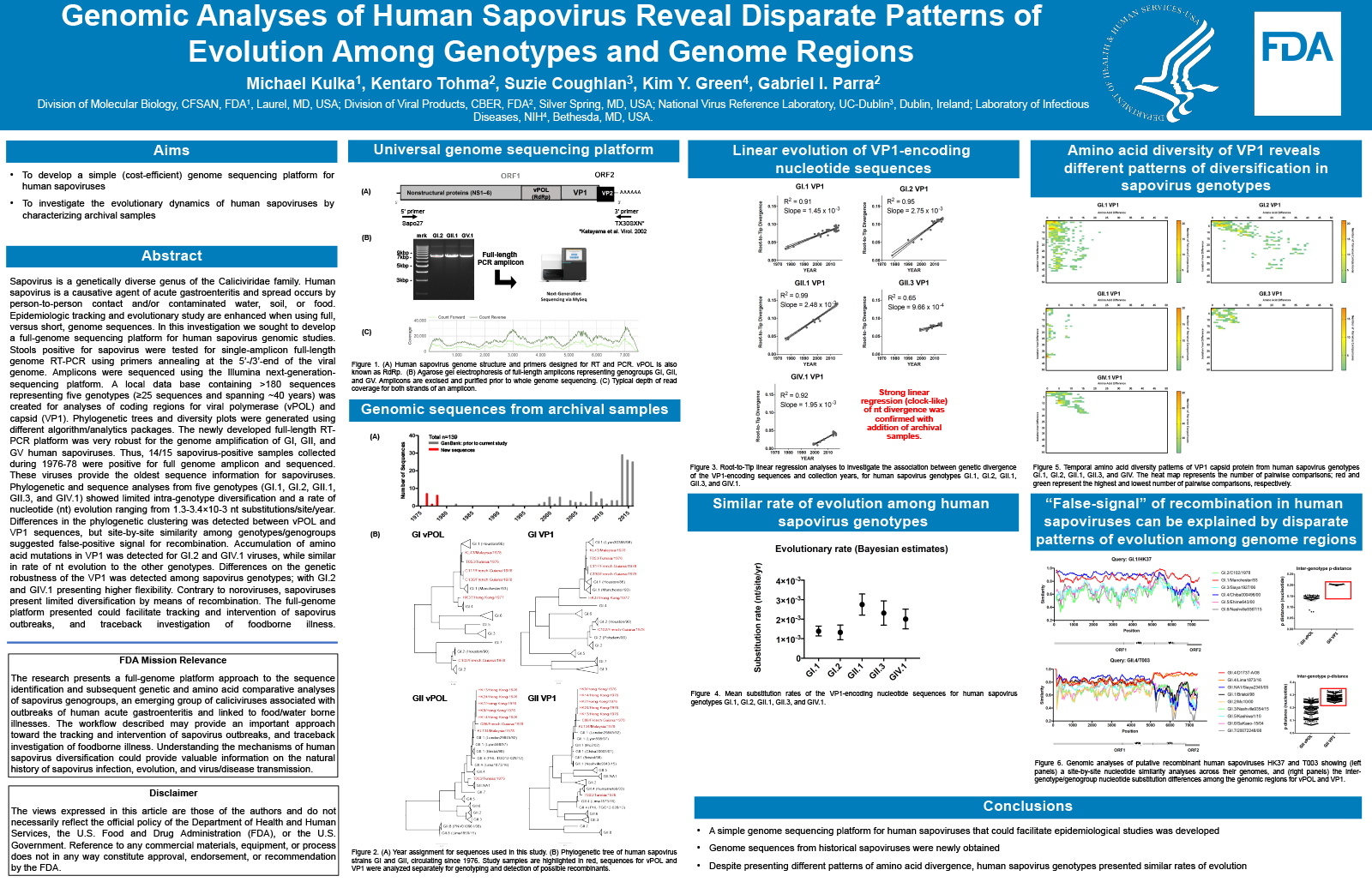2021 FDA Science Forum
Genomic Analyses of Human Sapovirus Reveal Disparate Patterns of Evolution Among Genotypes and Genome Regions
- Authors:
- Center:
-
Contributing OfficeCenter for Food Safety and Applied Nutrition
Abstract
Sapovirus is a genetically diverse genus of the Caliciviridae family. Human sapovirus is a causative agent of acute gastroenteritis and spread occurs by person-to-person contact and/or contaminated water, soil, or food. Epidemiologic tracking and evolutionary study are enhanced when using full, versus short, genome sequences. In this investigation we sought to develop a full-genome sequencing platform for human sapovirus genomic studies. Stools positive for sapovirus were tested for single-amplicon full-length genome RT-PCR using primers annealing at the 5’-/3’-end of the viral genome. Amplicons were sequenced using the Illumina next-generation-sequencing platform. A local data base containing >180 sequences representing five genotypes (≥25 sequences and spanning ~40 years) was created for analyses of coding regions for viral polymerase (vPOL) and capsid (VP1). Phylogenetic trees and diversity plots were generated using different algorithm/analytics packages. The newly developed full-length RT-PCR platform was very robust for the genome amplification of GI, GII, and GV human sapoviruses. Thus, 14/15 sapovirus-positive samples collected during 1976-78 were positive for full genome amplicon and sequenced. These viruses provide the oldest sequence information for sapoviruses. Phylogenetic and sequence analyses from five genotypes (GI.1, GI.2, GII.1, GII.3, and GIV.1) showed limited intra-genotype diversification and a rate of nucleotide (nt) evolution ranging from 1.3-3.4×10-3 nt substitutions/site/year. Differences in the phylogenetic clustering was detected between vPOL and VP1 sequences, but site-by-site similarity among genotypes/genogroups suggested false-positive signal for recombination. Accumulation of amino acid mutations in VP1 was detected for GI.2 and GIV.1 viruses, while similar in rate of nt evolution to the other genotypes. Differences on the genetic robustness of the VP1 was detected among sapovirus genotypes; with GI.2 and GIV.1 presenting higher flexibility. Contrary to noroviruses, sapoviruses present limited diversification by means of recombination. The full-genome platform presented could facilitate tracking and intervention of sapovirus outbreaks, and traceback investigation of foodborne illness.

